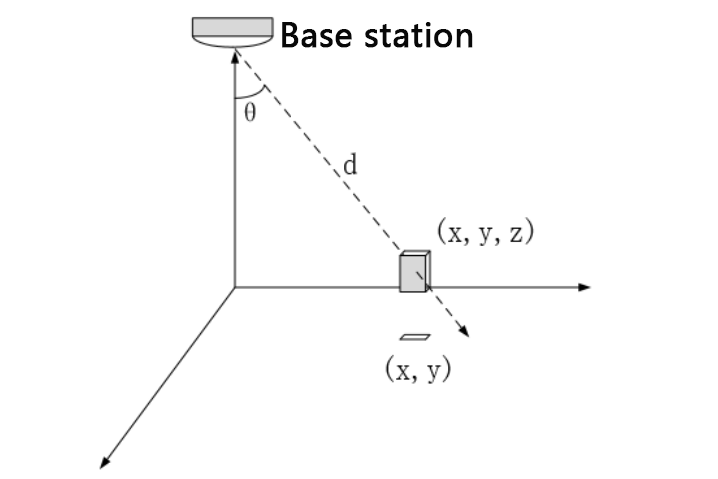Bluetooth AOA positioning has been very popular in the past two years. In the field of positioning, UWB and Bluetooth AOA have always been hot spots for comparison and discussion by industry personnel. We can't deny it. From the dimensions of technical characteristics and ecological power, UWB and Bluetooth AoA are the most valued high-precision positioning technologies. Let's analyze them in detail.
What is AOA
AOA (angle of arrival) is a professional term, which refers to measuring the angle of arrival of radio signals. This technology is usually used for radio positioning, and AOA angle of arrival is often measured by antenna array technology.

AOA has nothing to do with which radio technology is used. Bluetooth has AOA positioning, 5g has AOA positioning, and UWB can also have AOA positioning. In addition to AOA, you may also encounter the word AOD (angle of department). AOA and AOD mainly have different uplink and downlink modes, which can be considered as the same technology.
Comparison between uwb-aoa and Bluetooth AOA
1. Comparison of the number of base stations
Uwb-aoa1: 20 Bluetooth AOA (open environment with 1200 square meters and 3M ceiling)
Uwb-aoa: the coverage radius of single base station is > 20m, and there is no requirement for installation height
Bluetooth AOA: the coverage radius of single base station is 1 ~ 2 times of the installation height
2. Positioning accuracy comparison
▪ Uwb-aoa: large-scale 2D precise positioning + small-scale 3D positioning. UWB can not only measure the signal direction, but also measure the distance at the centimeter level, making the positioning more accurate. The label height does not affect the positioning accuracy.
▪ Bluetooth AOA: single small-scale 2D rough positioning. Bluetooth AOA can measure signal direction, but not distance. First assume that the height of the label is fixed, and then measure the signal to project the position to the intersection with the height plane. When the label is lifted or lowered, there is a height change, which will seriously affect the positioning accuracy.
3. Comparison of anti multipath interference
▪ Uwb-aoa: UWB technology is easier to identify the direct path, and the positioning accuracy is better in the complex environment with many obstacles.
▪ Bluetooth AOA: Bluetooth technology cannot distinguish between direct and reflected paths. What is measured is the aliased signal reflected by obstacles such as walls. In complex environments, the positioning accuracy is low and the stability is poor.
4. Anti radio interference comparison
▪ Uwb-aoa: UWB band does not conflict with other radios under the specification of the Ministry of industry and information technology. Moreover, UWB is an ultra wideband signal, which is more resistant to common electromagnetic interference (all narrowband).
▪ Bluetooth AOA: the 2.4G band used by Bluetooth is very crowded and vulnerable to interference from other electronic devices, including WiFi, Bluetooth headset, smart home, and even wireless mouse.
5. Comparison of cost and trend
Apple, Samsung, Xiaomi, oppo, vivo and Google have released or will release a number of mobile phones and consumer electronics products integrating UWB. The market trend of UWB is taking shape. As UWB enters the mobile phone ecosystem, many domestic and foreign start-ups are significantly reducing the cost of UWB chip and gradually reaching the price of Bluetooth chip. The cost and popularity advantages of Bluetooth relative to UWB are losing, and the physical performance limitations of Bluetooth relative to UWB will be more prominent.
Uwb-aoa is a new generation of indoor positioning technology with high precision, low cost and facing the future, which will be more widely used in the future.
If you have any questions, please contact us by the following ways